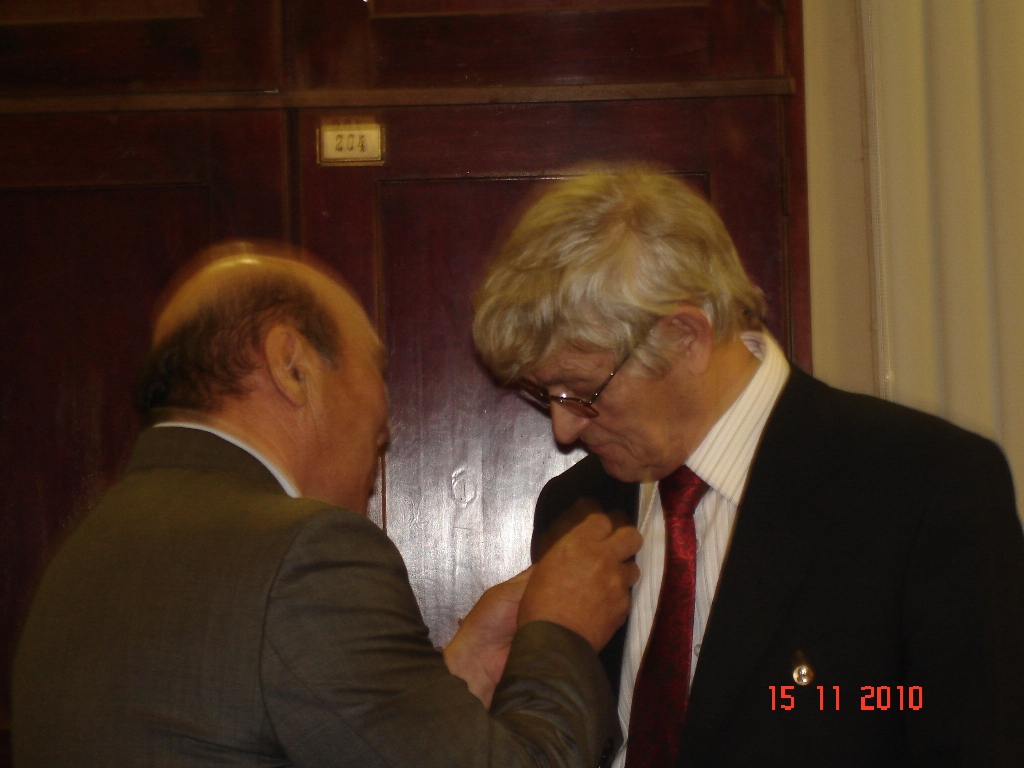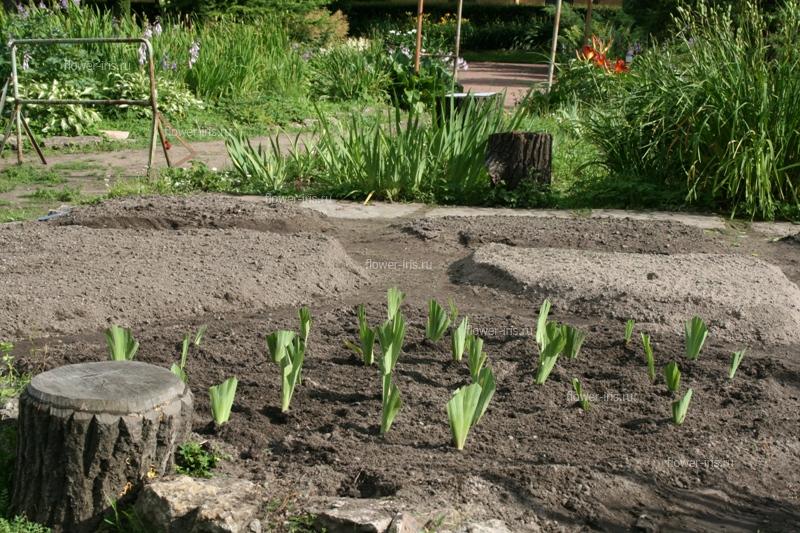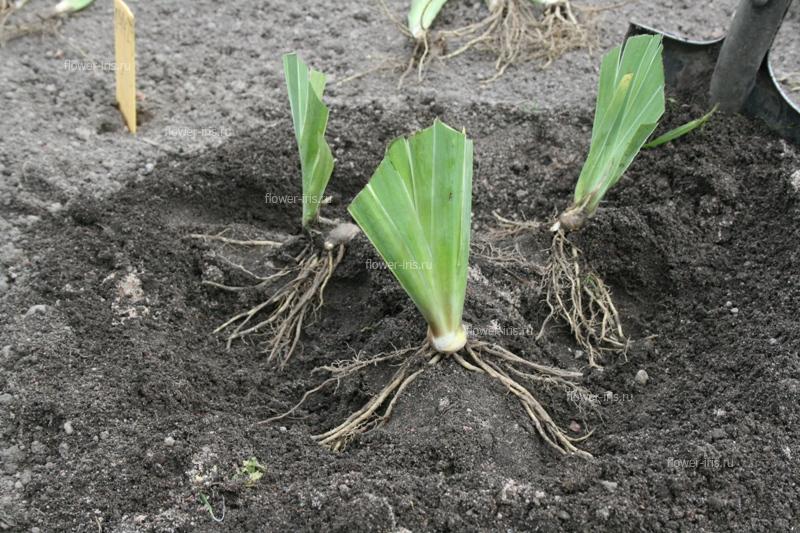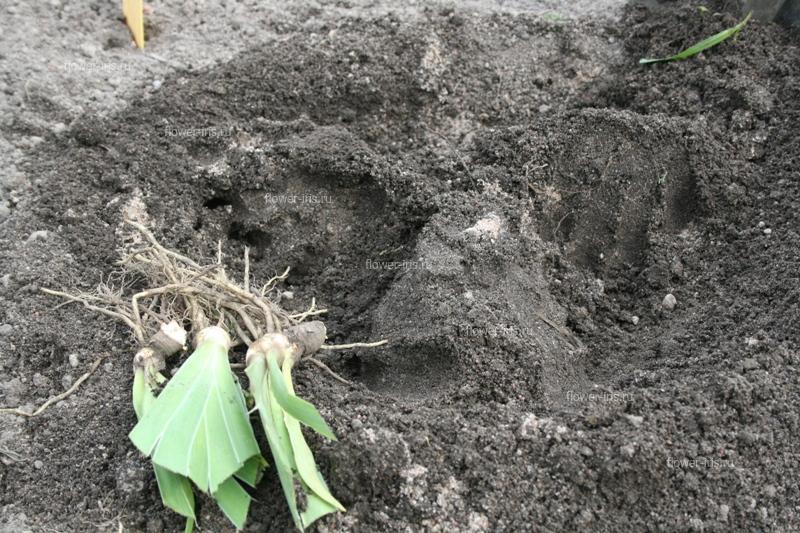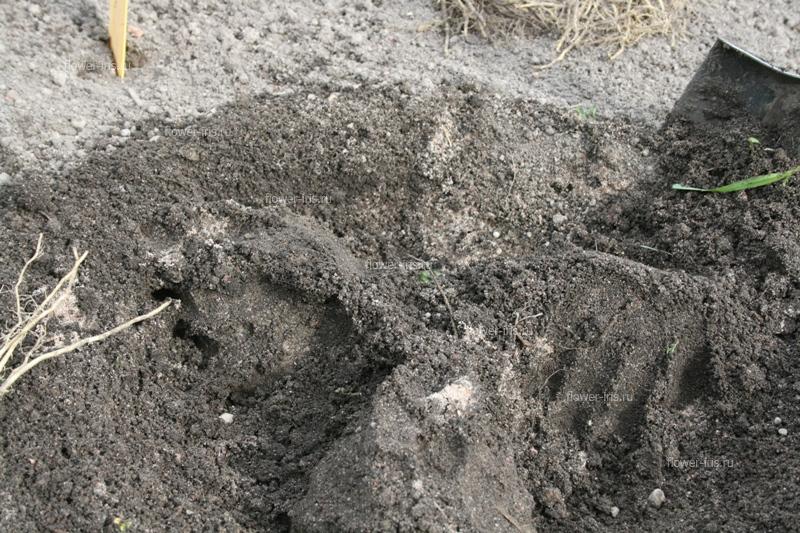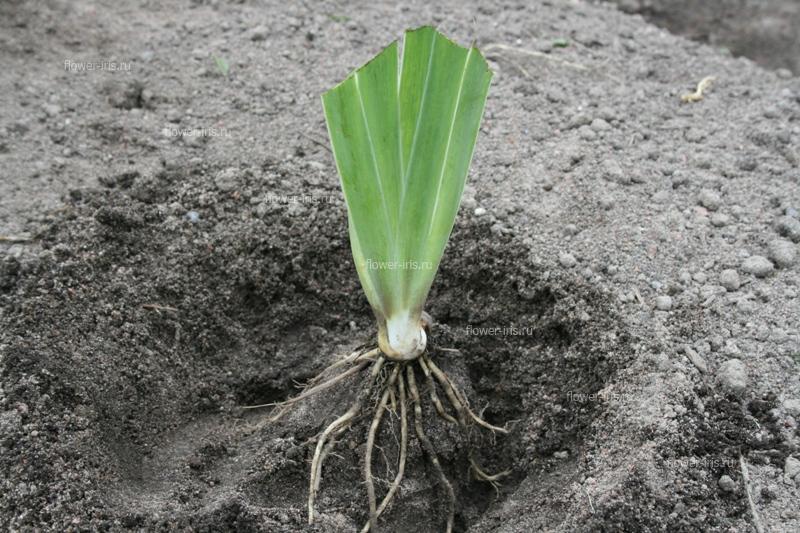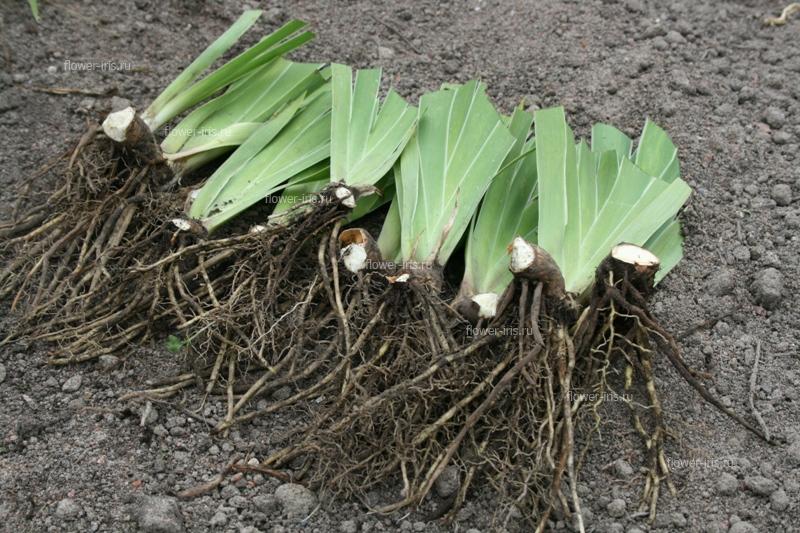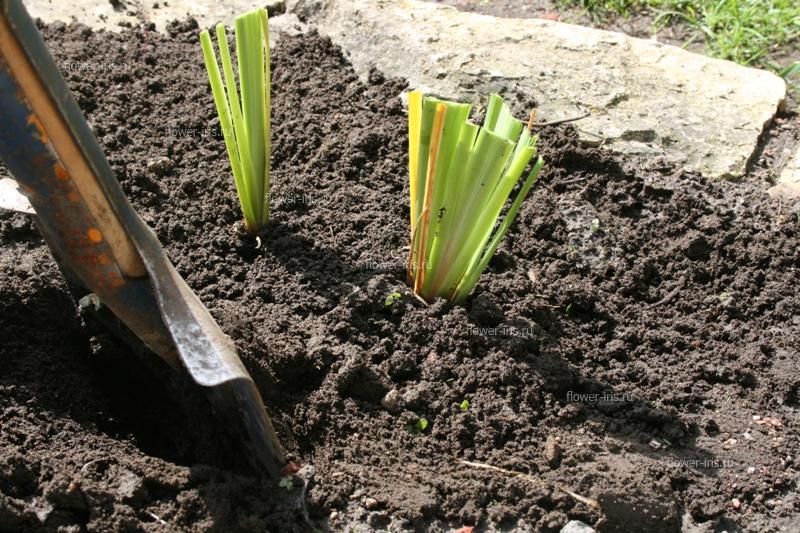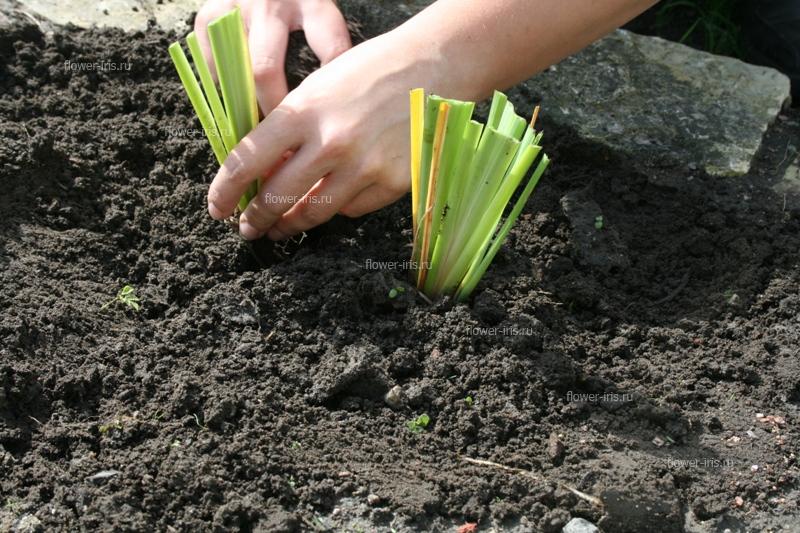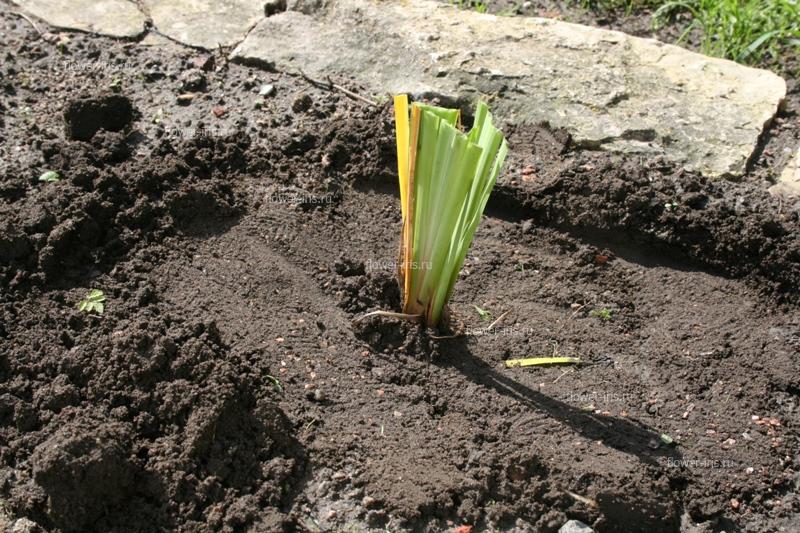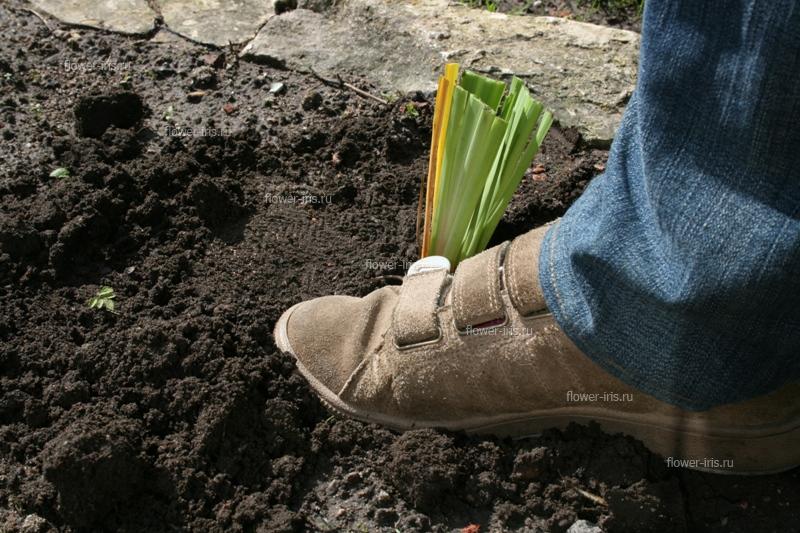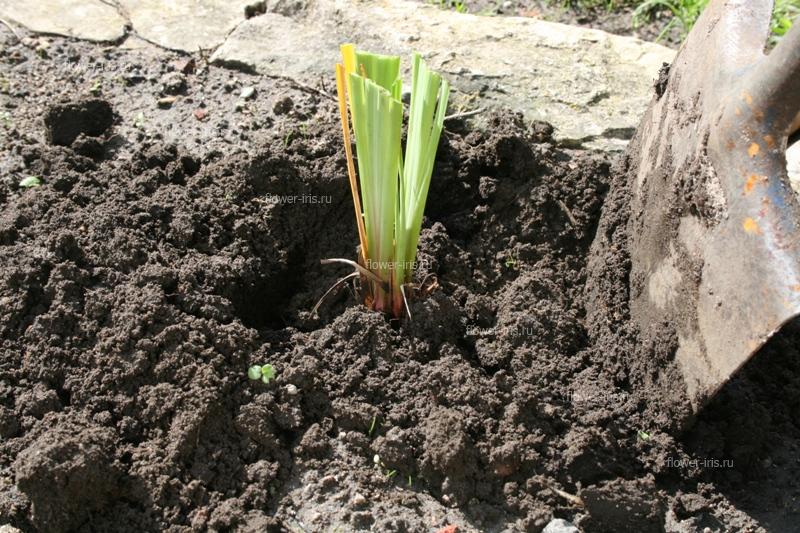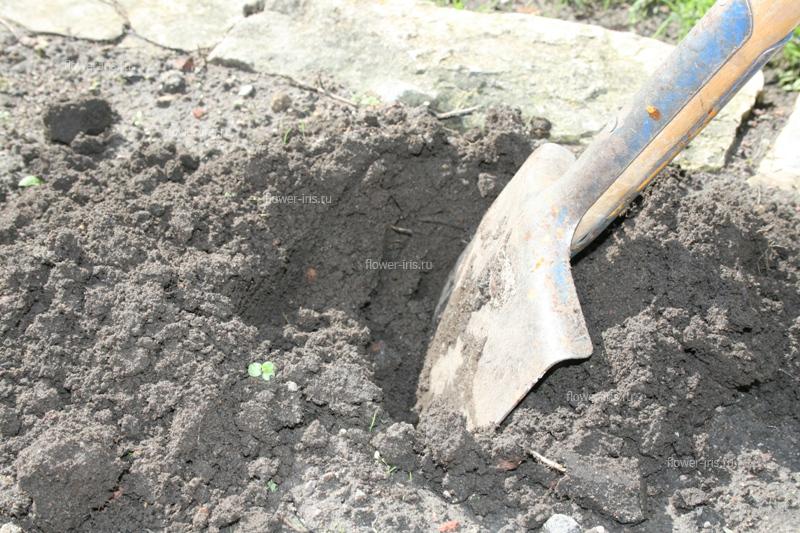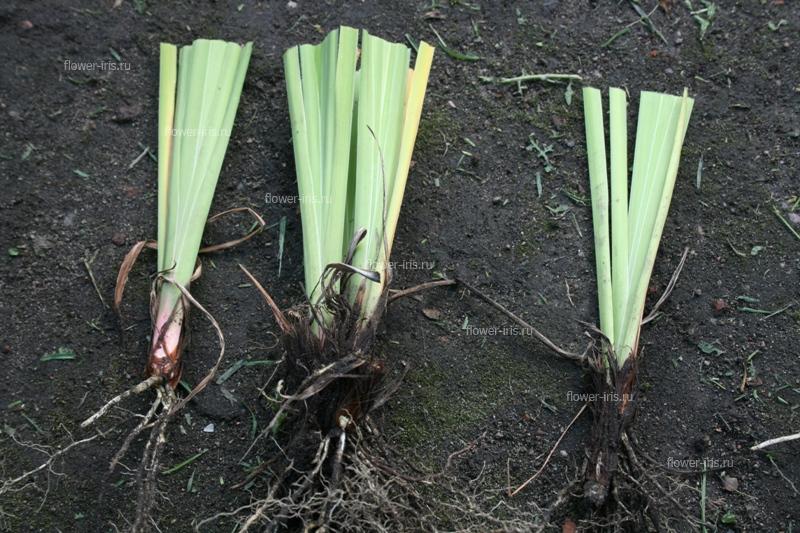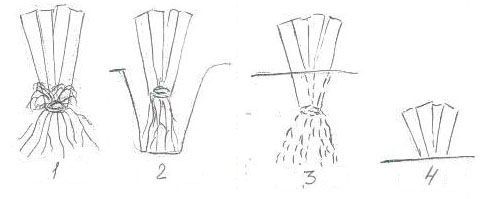|
News Photo Gallery |
AgrotechnologyHomepage → Agrotechnology Guidance on Growing Bearded Irises in St. Petersburg and its OutskirtsBearded Iris flower has a narrow strip of villa “a beard” on each of 3 lower petals.
Selection of locationIt is suitable to use any normal garden soil which should be made neutral or slightly alkalotic. It should have moisture permeability. Highlands are more appropriate. Irises must be protected against wind and grow in the sun (however, a brief shadowing is possible). The most important thing is to keep spacing between separated units (an annual unit with a fan of leaves cut by 1/3 of their length and roots cut by 10-12 сm), irises are prone to “escape” from the location of planting. Soil around irises should be always open, it is better to trim adjacent plants. PlantingThe period just after termination of blossoming, the period of active roots growth is the best time for planting. One can replant in early spring or early autumn. A planting separated unit is shown in fig.1. If 3 or 5-year plant links are planted in one locule strong shrubs will develop. Interlocule spacing comprises 50-70 сm. Irises have better appearance if planted in groups of 5-6 plants of different colour sorts. Deep planting must be avoided. A small hill is made on the hole bottom (fig.2). Rhizome of a separated unit prepared for planting is put on this small hill (fig.3), then rhizomes are distributed along the hill slopes for a plant to remain at the soil surface level. Having covered rhizomes with soil it is hardly pressed so that a fan of leaves is strongly fixed in vertical position. A shrub remains in one location up to 4-5 years.
CareWeeding and soil loosening are especially needed in the first part of summer. Plants are added by mineral fertilizers in wet soil twice a season: first - during budding, second – 3-4 weeks after blossoming (it is possible to reduce to 1 adding fertilizers – irises do not need a lot of fertilizers). It is advisory to add fertilizers containing few nitrogen compared to potassium and phosphorus or containing nitrogen slowly assimilated form. In impoverished soils organic fertilizers are effective: before planting overrotten manure is added into the soil which is then redug (a 5-10 liter bucket per 1 sq. m). During the first year irises should be added by small amounts of fertilizers, fertilizing level is to be increased in the second part of vegetation when the growth of secondary sprouts increases. During the second year the need in nitrogen and then potassium strongly increases. Kemira fertilizer which contains the whole range of macro- and microelements is the most suitable. In any case we recommend to reduce slightly dozing written down in the packaging. Watering is necessary in the period of blossoming. One should remove petals and flower stalks which have dried from exterior after blossoming (faded flowers are broken off during blossoming). In autumn irises need more sun and dryness which prevent rotting (fig.4). The most valuable sorts are covered by fir tree twigs, dry peat or fallen leaves. The best time for covering is when frosts begin (1st part of November). It is recommended to open flowerbeds after snow melting in the second part of April. Pests, diseasesBacterial rotting of rhizomes is highly dangerous in warm wet summer periods. The fan of leaves becomes yellow and falls down, the rhizome has strong unpleasant smell. Rotting parts of the rhizome are to be cut away and cutting edge is to be washed by strong manganese solution. The rotting agent is afraid of sun and dryness (it is advised to to uncover rhizomes of soil from the surface and sides). It is recommended to pretreat rhizomes with fundasol, arasan or TECTO before planting. Insects are vectors of diseases: thunder flies (make nests in leaf angles, the leaf loses its wax veneer and appears depressed) and cut worms cutting leaves and flower stalks form underground. Thus, prophylactic treatment of soil and plants by phytosporine is required. Garden slug causes huge damage to irises in humid summer. In daytime it hides under stones, soil debris and leaves. It can be eliminated by hand collecting or by sprinkling superphosphate or germicides “Meta” or “Gnom” (Dwaft) over the soil. Guidance on Growing Siberian Irises in St. Petersburg and its Outskirts
Selection of locationIt is suitable to use any normal garden soil which is thoroughly weeded. Irises could stand excessive saturation. Siberian Irises are very durable, unpretentious and modest in their needs. The best type of soils is light sandy clays rich in mull. The best view is in form of a solitary group in the lawn or near the house. Irises prefer sunny places (however, a brief shadowing is possible). The most important thing is to keep spacing between separated units (Provided good care Siberian Irises develop powerful root system). PlantingThe best period for planting is early spring and late summer. However one can make replanting during the whole vegetation period. A planting separated unit is shown.1, it represents an annual unit with a fan of leaves cut by 1/3 of their length and roots cut by 10-12 сm. If 2 or 3-year plant links are planted in one locule strong shrubs will develop. Interlocule spacing comprises 30-40 сm. Siberian Irises provide better view if planted in groups of several flowerbeds of one sort. Planting is deepened. Rhizome of a separated unit prepared for planting is put in a hole below the soil surface level (fig.2). Having covered rhizomes with soil it is hardly pressed so that a fan of leaves is strongly fixed in vertical position. Good watering is required. A shrub remains in one location up to 5-7 years.
CareWeeding and soil loosening are especially needed in the first part of summer. Plants are added by mineral fertilizers in wet soil twice a season: first - during budding, second – 3-4 weeks after blossoming (it is possible to reduce to 1 adding fertilizers – irises do not need a lot of fertilizers). It is advisory to add fertilizers containing few nitrogen compared to potassium and phosphorus or containing nitrogen slowly assimilated form. In impoverished soils organic fertilizers are effective: before planting overrotten manure is added into the soil which is then redug (a 5-10 liter bucket per 1 sq. m). During the first year irises should be added by small amounts of fertilizers, fertilizing level is to be increased in the second part of vegetation when the growth of secondary sprouts increases. During the second year the need in nitrogen and then potassium strongly increases. Kemira fertilizer which contains the whole range of macro- and microelements is the most suitable. In any case we recommend to reduce slightly dozing written down in the packaging. Watering is necessary in the period of blossoming. One should remove petals and flower stalks which have dried from exterior after blossoming (faded flowers are broken off during blossoming). In autumn irises need more sun and dryness which prevent rotting (fig.4). The most valuable sorts are covered by fir tree twigs, dry peat or fallen leaves. The best time for covering is when frosts begin (1st part of November). It is recommended to open flowerbeds after snow melting in the second part of April. Pests, diseasesTurnip moth cut bases of flower stalks which become yellow, do not mature and die. Double spraying with fufanon (0,1-0,2 %, 10-20 mg per 10 liters of water) in early May is required. To prevent pests ground is sprinkled by bazidin granules. Gladiolus thunder flies and rust lead to loss of leaves decorative splendor. In the former case the leaf becomes brown and dry, in the latter case small long dark brown spots emerge. One should cut leaves and burn them. To combat thunder flies it is recommended to spray foliage with fufanon (20-30 g liters of water) or actar – 0,01%. Spraying with 0,6-0,8 % sulfur suspension gives good results against rust. Scorch – burn. Leaves start becoming brown in the middle of vegetation, their edges dry and bend. The best remedy is to dig out and burn the plant. |


 Eng
Eng

